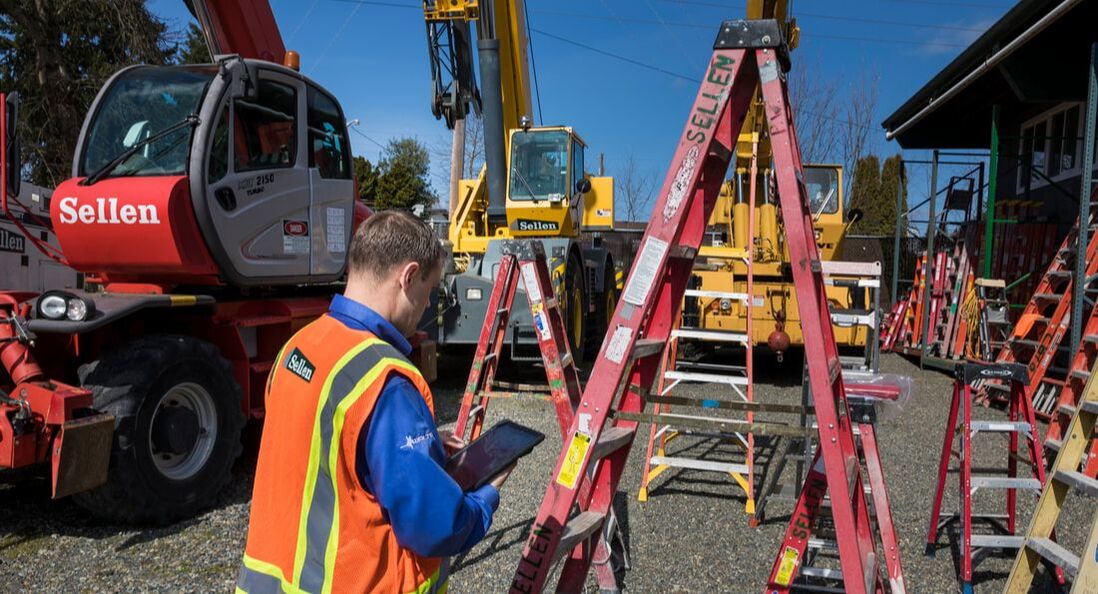Five steps to improve ladder safety
February 23, 2022
By Evan Hardin | Director of Safety, Health, & Environmental Sales
By Evan Hardin | Director of Safety, Health, & Environmental Sales
|
Working with ladders is common. It’s easy. It’s not something we spend a lot of time thinking about.
But we should. Lives are literally at stake. So, if you’re working with ladders, there’s always a correct first step: choosing the right ladder. Too often, this simple part of the process is overlooked. If you read nothing else, consider these five points.
Falling from heights could cause a significant injury or even a fatality. So, it's really important to start with these five basic steps. FIND YOURS: Looking for a ladder? Start here! Choosing the right ladder You have a lot of different ladders to pick from.
An example: Maybe you're trying to use a ladder that isn't tall enough, and you're trying to get up on a roof. If it doesn't extend far enough beyond the roofline that could make it unsafe. Questions to ask yourself
Why does the material matter? If you're working around active power sources, you want to choose something that's fiberglass and not a conductive metal. So many different things come into play, and really, all of them matter. What role do inspections play? Every time you go to use something that could essentially save your life, you're going to want to do a pre-inspection. Check that everything looks good before you put your weight on it. And with ladders, that can be fairly simple.
Another thing to consider when you think about inspections is the environment you're working in. If you just use a ladder around the house every once in a while, it probably doesn't have to be inspected as much as maybe someone in a paint booth or a service tech who has it out in the sunlight or outdoors in different conditions. And construction teams need to stay on top of inspections as a general rule. Also, you get to decide on the cadence for regular inspections. You don’t just do pre-inspections; you set times for ongoing checks. That only helps you. What are common ladder errors? One of the most common errors people will make is to move “outside the rails.” You always want to keep the center of your belt inside the rails of the ladder to make sure you don’t lose your balance. One that feels like a time-saver but is actually a hazard is walking the ladder. This is where you will literally “walk” the ladder back and forth by shifting your weight while on the ladder. If you’re on a stationary ladder, you don’t want it moving. Period. Remember twin-front ladders from before? Too often we’ll hear about people working on both sides of stepladders. That’s a no-go. Stepladders cannot support workers on the side without rungs. If you need two people to work off the same ladder look at a twin-front or a platform of some kind. Another common error is when the angle of the ladder isn't set correctly. This is especially common with extension ladders. This can happen because the ladder isn't on a level surface, there’s poor footing, or there’s improper balance. One way to fight this is with self-levelers. Multi-position and combination ladders tend to have these for that very reason. How do ladder safety programs work? I think it's really simple, and it comes down to the five steps we started with.
Takeaway If you follow those five simple steps, it can lead to a very simple yet safe ladder program and is something that doesn't have to be any more complicated than that. You can add different steps or different aspects to it, but really, those should be the basics, and those should be a part of every ladder program out there. Looking for more? We've got you covered. Vertical Divider
|
Ladders are among the top causes of OSHA violations.
Like what you're seeing here? Subscribe to the Blue Print for FREE and get the magazine sent right to your address. |


